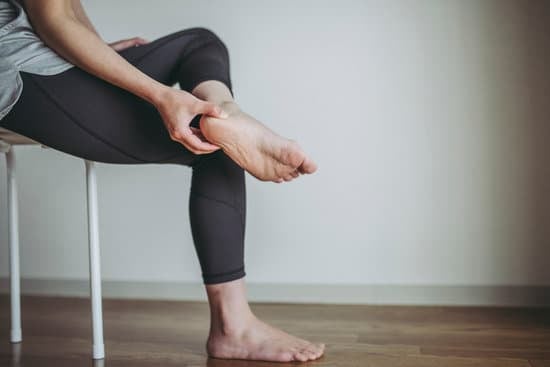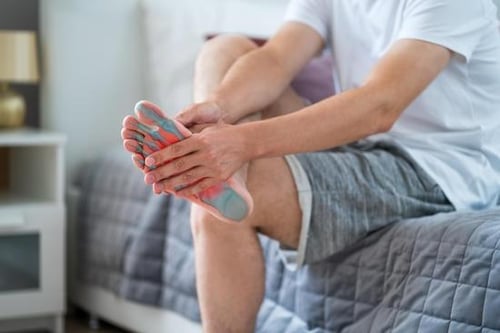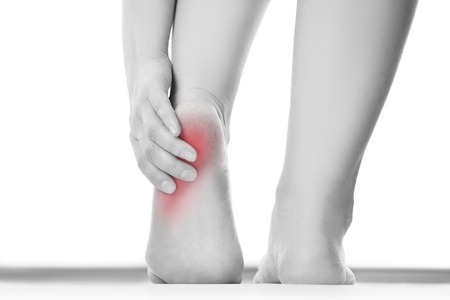Understanding Heel Spurs: Symptoms, Causes, and Treatments

Heel spurs are a common foot condition that can cause heel pain and discomfort. Treatment for heel spurs typically involves stretching exercises, anti-inflammatory medications, or even surgery in some cases. In this blog post, we will explore the causes and symptoms of heel spurs as well as treatments available to help manage them effectively.
Heel spurs are caused by calcium deposits on the heel bone, which forms when the ligaments and tendons of the heel pull at the heel bone over time. These calcium deposits can lead to inflammation in the affected area, causing pain and difficulty walking.
Heel spurs may also be associated with conditions such as plantar fasciitis or Achilles tendon tendonitis. The symptoms of heel spurs include sharp pains in the heel, swelling, tenderness, and redness around the heel area.
Diagnosing Heel Spurs
Diagnosing heel spurs can be difficult as the symptoms are often similar to other conditions. Heel spurs typically cause heel pain and tenderness, as well as swelling and redness in the heel area.
Other common signs include difficulty walking or standing on hard surfaces, sharp pains when stretching the foot, and a feeling of having a stone in your shoe. Your doctor may recommend imaging tests such as X-rays or MRIs to better assess your condition and determine if heel spurs are present.
Once diagnosed, treatment options for heel spurs range from conservative measures such as rest and stretching exercises to more invasive treatments like steroid injections or surgery.
Treatment Options
Fortunately, heel spurs can be treated with a variety of treatments ranging from home remedies to medical interventions. Home remedies for heel spurs include rest, ice therapy, stretching exercises, arch support insoles, and anti-inflammatory medications such as ibuprofen. Additionally, physical therapy may be recommended by your doctor to help relieve heel pain caused by heel spurs.
For those who experience chronic heel pain due to recurrent spur formation or severe symptoms that do not respond to conservative treatments, surgery may be necessary for the removal of the spur itself or other related structures such as ligaments or tendons near the affected area.
Prevention
Prevention is key when it comes to heel spurs, as a treatment for heel spurs can be challenging. To help reduce your risk of developing heel spurs, there are several steps you can take. Here are some tips for avoiding heel spurs in the future:
- Wear proper footwear with plenty of cushioning and support to absorb shock from activities like running and jumping. Look for shoes with a low heel height and arch support to provide stability to your feet.
- Stretch your calves before exercising or engaging in any physical activity that may require putting pressure on or jumping off your heels. This will help reduce tension on the heel bone and surrounding muscles and tendons which may otherwise lead to heel spur formation.
- Maintain a healthy weight; being overweight puts extra pressure on the heel bone, which can contribute to heel spur development.
- Increase overall flexibility by incorporating regular stretching into your daily routine. Stretching exercises should also focus particularly on the muscles that make up the Achilles tendon, as tightness in this area can increase tension at the heel bone and lead to heel spur formation.
- Keep feet dry throughout the day; moisture buildup in shoes or socks can promote bacterial growth around the heel area which could increase the likelihood of developing heel spurs.
When Should I See a Doctor?
It is essential to pay attention to heel spur symptoms and take action if they persist. If you experience any heel spur symptoms, such as sharp heel pain or tenderness on the underside of your heel, it is important to see a doctor for diagnosis and treatment. A doctor at Sweeney Foot & Ankle can help determine the severity of the condition and recommend treatments that may help reduce discomfort and improve mobility.
With proper care and treatments, heel spurs can often be managed effectively allowing you to return to normal activity levels with minimal discomfort. It’s important to stay informed about heel spur symptoms so that if they occur, action can quickly be taken in order to reduce pain and improve mobility.






